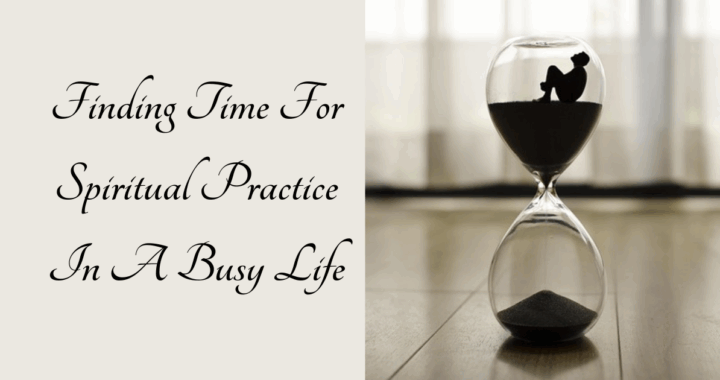Singing is one of the most joyful activities we can do. It’s been a part of our human heritage for thousands of years. Encouraging children to sing and helping children to develop their own voices is a great way for parents to support the growth of self-assured and confident youngsters and to give them a creative outlet to express themselves. So read on to find out some tips and tricks.
The benefits of singing and encouraging children to sing
There are many benefits of singing that have been identified over the years, not just for individuals but for communities too. Singing has been show to :
- Reduce stress
- Increase confidence
- Improve lung capacity
- Improve sleep and posture
- Create a sense of belonging and community
- Ease pain, and
- Increase life expectancy!

How to start
Singing is a natural thing that we can all do. The problem comes when many of us are told at an early age that we cannot sing. That affects our confidence and we sometimes start to tell ourselves that we can’t do it and from then on, it’s a negative spiral down until we stop trying.
One singing teacher told me that “if you can talk, you can sing” and I think this is a great quote to remember when encouraging anyone to sing.
You do not need to be a famous Tenor like Pavarotti or a pop icon like Billie Eilish to start singing. Almost everyone can do it, anywhere, without any specialist equipment – all you need is the motivation and willingness to give it a try and the resilience and determination not to let others put you off. If you are encouraging younger children to sing, then use praise and ALWAYS be positive. Young voices are still developing and young children want to do well, so praise their efforts and the rest will follow.
Here are some key building blocks to encourage your children to sing:
1) Model singing by doing it yourself
All children learn by observing adults and copying what they do, so encourage children to sing by singing to them and with them. This does not need to be formal, in fact, the more informal, the better, since this will allow spontaneity and show children that singing really is something that they can do anywhere. You could sing in the car, in the bath, in the garden, whilst cooking to liven up the activities and introduce some music and movement? You could encourage children to sing you ‘good morning’ as they get up, or sing a lullaby when you put them to bed.
2) Use chanting and simple songs to start
Before we sang, we chanted. Chanting is an ancient method of using our voice that uses repetitive words or phrases and a very simple tune or a monotone. If you are encouraging children just to make some noise, you don’t even need to use recognisable words if you don’t want to; you could start with phonetic sounds such as “me, may, mar, mow, moo”, “te, tay, tar, tow, too”, varying the consonant at the front. This can also help develop speech and language abilities by practising the pronunciation of different vowels and consonants.
Using simple chanting songs will also introduce the concepts of rhythm and timing, and are easy for children to learn and repeat. You can use simple rhymes such as “Round and round the garden” or “Ring a ring of roses” just to get children to repeat the words out loud. When they get the hang of the rhythm, you can introduce more of the tune.
3) Provide access to noisy toys and musical instruments
In order to learn to sing, you first need to learn to ‘hear’, listening for different note lengths, pitches and rhythms. And if you can make those noises yourself, you’ll find it easier to start to recognise the differences between them. So helping children to listen to, and make different noises themselves will teach them about pitch, volume and tone without too much effort.
You can use homemade drums and percussion to start with. Old drink bottles washed out and filled with stones or dried pasta/ rice make excellent shakers, and an upturned plastic bowl and wooded spoon make an effective drum. If you really want to up the educational content, use some different-sized boxes as drums, asking the children to listen to the different sounds they make. Or fill plastic bottles with varying amounts of water and see how it affects the sound. You can then progress to instruments such as glockenspiels, bells, tambourines or recorders. later.

4) Introduce lots of different music
Nowadays, we are lucky enough to have access to a very broad range of music; it could be traditional nursery rhymes, songs from cartoons and films, classical music, pop songs, musical theatre, or even opera, folk, rap, folk or historical and religious music. Music is everywhere and children will be exposed to it even before birth. Playing different types of music at different times of day will help them develop a greater understanding of different genres, what they find soothing and what they find exciting. You could introduce a ‘tune of the week’ to help broaden everyone’s musical tastes.
5) Help children ‘feel’ the music by using movement
- Using movement can help people learn, especially if they like to ‘do’ things to learn them. Repeating movements help children remember things so songs such as “Head, shoulders, knees and toes” and “If you’re happy and you know it, clap your hands” can help children to remember lyrics and also to feel the rhythms in their bodies. It can also make it easier for children to start because they can join in without using their voices if they are feeling a little shy. And moving helps develop their coordination and motor skills too.
6) Use games to catch their attention
There are lots of simple singing games that you can use to hook children into singing with you. Here are a few you can try at home:
- Call and response – sing a question such as “What’s your name?” and get the children to respond in song.
- Rhythm – clap a simple rhythm and ask the children to repeat it. Start with very simple rhythms and when they master this, vary things by using other body parts instead of clapping, such as stamping, drumming on legs and jumping too.
- Pitch-matching games – sing a note and get the children to sing it back. Vary the pitch and the sound used. Use simple ways to introduce the concept of high and low; such as singing the word ‘head’ in a relatively high pitch and the word ‘feet’ in a lower pitch
- Loud or soft volume – use your hands to ‘conduct’ the children singing – bring your hands close together to get them to sing in a whisper, or wide apart to get them to sing louder
You can find some more ideas for musical games here.
7) Make up your own songs
This is one of the most fun things to do with children because you are giving them a free rein to express themselves in the way that they want to and be creative. You can do this together if you want to, or if you have more than one child, or friends over, try doing it in groups. Introduce different topics such as the weather, food or gardening and keep the songs short and sweet.

Encouraging children to sing: Final tips and tricks
Here are some final tips and tricks to remember when encouraging children to sing:
- Stay within your own vocal range. Remember that every person is unique and has a different vocal range so what is comfortable for one, may not be for another. When dealing with younger children, the main aim is to encourage confidence and experimentation, so don’t have too many expectations about extending ranges beyond what is naturally comfortable. Most professional singing coaches do not even attempt to do this until children are much older and their vocal cords have developed more, so there is plenty of time to stretch and develop young vocal muscles later on.
- Don’t focus on the words too much. In fact, forget the words sometimes! Young children may not even be able to pronounce some of them, but that will change as they develop. The most important thing is that they are singing something.
- Use praise, praise, and yet more praise. And don’t worry about correcting young children too much when they are starting out, as this can undermine their confidence. Remember your goals – you are not entering ‘choir of the year’ but developing singing as a form of personal expression, so concentrate on what children do well rather than pointing out too many errors.
- And of course, smile and enjoy it!









I learn so much from searching online.. There is a world out there I did not even know existed. I love this singing story. I remember it from childhood, some sixty years ago, and my mom singing little jingles with our names in them. And I remember a stepfather having sang a ditty that we got in trouble for repeating. We didn’t know what it meant, but he sure did!
Haha – at least he was sinigng to you – very important to learn as many words as you can!! Obviously, you don’t have to use them all yourself! 🙂
Thank you very much for this valuable and detailed post about Encouraging children to sing. I really think this is a very valuable post. Many children today are away from singing because of games. So we must train them to sing from childhood. I am sending this to my sister too. She has two small children. Keep posting like this.
HI there. Thanks for reading the post and taking the time to comment. Singing is really a wonderful thing and we can all do it! I hope you get to hear some of your sister’s children’s songs soon. Take care. Gail